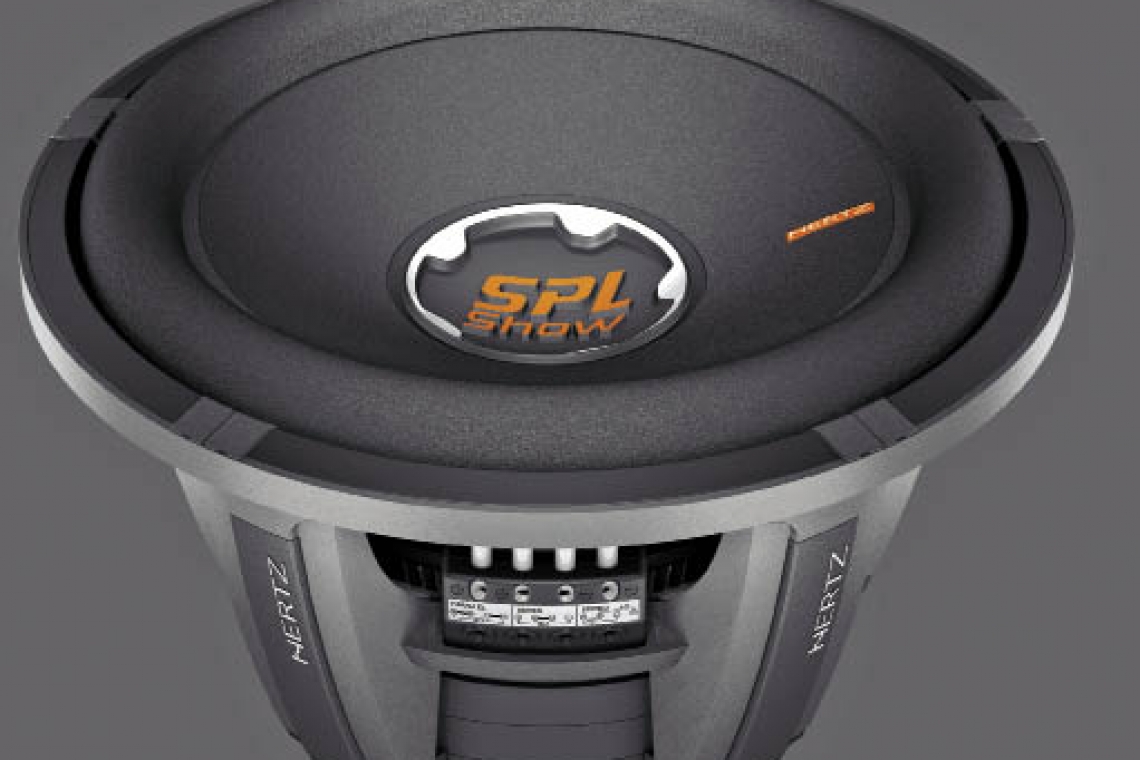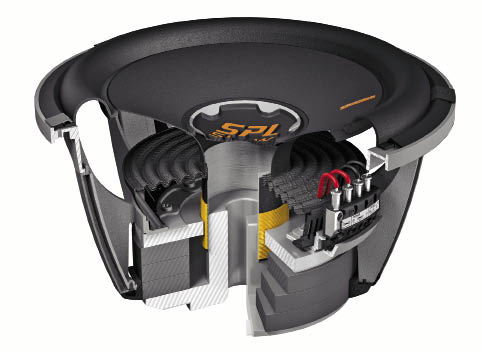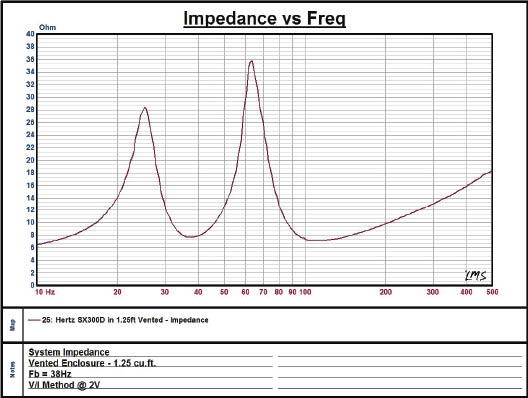Walking through the Hertz-Audison suite during this year’s Consumer Electronics Show in Las Vegas, I happened to catch one of the product engineers giving an excellent explanation of just what (and who) the Hertz SPL Show subwoofers were designed for. Although Hertz has called them simply “Acoustic Pressure Generators”, I found out the SX subs are much more than woofers designed to simply play loud. While it is true they were originally designed for the SPL competitor, the SPL Show products have had a lot of effort put into making them also sound good while you’re cruising down the street. The series has been around for about a year, and while I know the SX subwoofers have been successful and well received in the SPL ranks, I wasn’t aware that a lot of people who do not compete in SPL contests have also chosen them for their rugged performance and good sound. The idea is to have a woofer in your daily driver that will play the SPL game with anyone else in the parking lot, but be totally enjoyable to listen to while getting to and from the parking lot wars. I figured we ought to test one, so we could let all of you readers in on the secret too. Well, thanks to the generous folks at Hertz, ask and ye shall receive- a few weeks later, the Hertz SX 300D 12-inch SPL Show subwoofer showed up at our test lab.
FEATURES / CONSTRUCTION
The Hertz SPL Show line of subwoofers is comprised of three models, the SX 250D, SX 300D, and SX 380D. These woofers are 10, 12, and 15 inches in size, and have continuous power handling specs of 600, 800, and 1000 watts respectively. All three models are dual 2-ohm voice coil designs, allowing for maximum flexibility when designing the woofer systems final impedance. The Hertz SX woofers use a very smart looking cast aluminum basket, which is finished in two shades of gray powdercoat. The back plate of the woofer is show chrome plated, and vented to allow airflow to cool the voice coil. On the topside, a tall foam surround provides the control and excursion needed for high SPL’s at very low frequencies. The center dustcap is concave, with the Series logo in orange and a small Hertz logo set flush into the cone surface. Mounting screws are covered by a smooth looking trim ring which is secured to the basket with small screws and plastic caps for a good looking installation. Also included are two rubber mounting gaskets, one for conventional “drop in” mounting, and the other for “front mounting”. The thoughtful folks at Hertz even include extra set screws, a long hex wrench, and all the mounting screws. Attention to detail like this is fantastic and so important... especially when it’s 1AM and you’re trying to finish the install, or the wire connection set screw rolls across the floor to some dark corner, or when your buddy is long gone and locked his toolbox with your 2.5mm hex wrench inside! The Hertz SX series woofers are designed to have extremely linear movement, even at high excursion. This is made possible via a triple-stacked magnet assembly and a longer than usual aluminum voice coil former, and four-layer 2.5-inch diameter voice coils. The dual spiders are mounted on a special “Back Vented Spider Support” which allows improved air flow to keep the voice coil cool and increase power handling.
Additional high performance features include sewn in tinsel leads, and heavy duty terminals that use hex screws to secure the wires. Worth noting are the cleverly designed terminals, incorporating easy to configure spring loaded “jumper clips” which make it incredibly easy to configure the woofers voice coils in series, parallel, or independent coils for stereo operation or for two amplifiers per woofer. You can even change the jumper clip configuration without removing the wires. Nice! All the SX woofers use a pressed paper cone, which many believe has a more natural sound than more commonly used poly cones. I am also a fan of the sound of paper cone woofers, so I was looking forward to listening to this one.
LISTENING
Before I did any listening, I exercised the woofer for a few hours, and let it normalize again overnight. This isn’t a compulsory step, because in your car the woofer will obviously break-in as it’s used for the first few days or weeks, but here in the test lab, we do everything we can to maintain consistent and accurate results, so we exercise all speakers before doing any evaluations. Because I had the opportunity at CES to listen to the man who engineered the woofer, I knew that the Hertz SX 300D would be best suited to a smaller size vented enclosure. It was a good thing too, because while the owner’s manual will show you how to configure the jumpers and wire up a dozen or so woofers, it mysteriously gives no recommendations whatsoever for an enclosure size or type.
The smallest vented box I had on hand was 1.25 cubic feet, so I figured we’d give it a go in that. After selecting a series wiring configuration for a final impedance of 4 ohms, and mounting the woofer in the enclosure I set the amplifier crossover to 100Hz, with a -24dB per octave slope.
Frequent readers of my speaker reviews know that my musical tastes are pretty diverse, and I’d picked out some different tracks to test the mettle of the Hertz woofer. Because this is a woofer designed to play low and loud, I began with a track from Yello’s Essential CD, “Oh Yeah”. The hype about this woofer playing low and loud is no joke, and that track proved it. Moving on to a few other favorite bass SPL tracks from Bass Mekanik and others, I was convinced that the SX 300D would definitely play loud, and handle a lot of power.
But let’s not forget that its alternative claim to fame was also supposed to be good sound quality, so I switched musical gears and broke out my audiophile tracks. I listened to a bunch of material from DMP, Chesky, and Sheffield Labs. Once again, the woofer pretty much lived up to the story I’d heard at the show, and in fact it did sound pretty darned good for a subwoofer designed for SPL. The SX 300D had tight, fairly well-controlled bass with a lot of punch and impact. It had a touch of ringing that maybe wouldn’t be there in a more compliant design, but then again it’s that stiff suspension that allows it to handle the 800+ watts I fed it with no complaints whatsoever. And thanks, at least in part, to the intelligent use of a paper cone, subtleties like resonances from plucked strings, and augmented chords were easily reproduced too. Make no mistake, this woofers primary focus is to play low and loud, but when the mood strikes, it’s a pretty decent compromise for the sound quality crowd too.
MEASURED PERFORMANCE
With my listening completed, I brought the woofer into the test lab and made some measurements. As I expected, the published parameters for the woofer are very close to what I measured, and the in-box curves also came out pretty much as expected. As you can see from the SPL graph, this is a subwoofer that can really get the job done.
CONCLUSION
The Hertz SX300D woofer sort of reminds me of a 1960’s muscle car. Somewhat like my old ‘70 Hemi Roadrunner, all most people had to do was see the Hemi badge, and they knew what they were up against. Like that car, the SPL Show series of subwoofers are not for the faint of heart or those who are timid about their sound. Just like my Hemi, all you need to do is crank it up one time, and anyone within earshot will know you’re serious! And while no subwoofer can satisfy every single purpose or customer, this one is purposefully made for anyone who appreciates loud, deep, authoritative bass in their car. But unlike some other woofers that were designed and restricted with a focus on SPL contests, you can actually play real music with this impressive subwoofer, and enjoy its sound quality performance too. For more info visit: www.hertzaudiovideo.com.
Related Articles
 Throwback: 5 Vehicles from PASMAG in 2010
Throwback: 5 Vehicles from PASMAG in 2010
 Massive Audio's New GTR Series and GTX-H Series Subwoofers
Massive Audio's New GTR Series and GTX-H Series Subwoofers
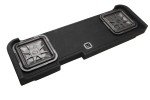 KICKER Under-Seat Loaded Enclosures for Ford, GMC, Chevy, RAM
KICKER Under-Seat Loaded Enclosures for Ford, GMC, Chevy, RAM
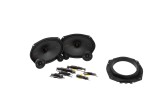 KICKER Introduces Pairs of 3-Way Component Systems
KICKER Introduces Pairs of 3-Way Component Systems
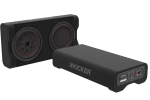 Understanding Audio Radiators w/ KICKER
Understanding Audio Radiators w/ KICKER
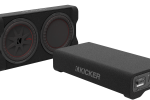 KICKER PTRTP Powered Down-Firing Subwoofer Loaded Enclosures
KICKER PTRTP Powered Down-Firing Subwoofer Loaded Enclosures


